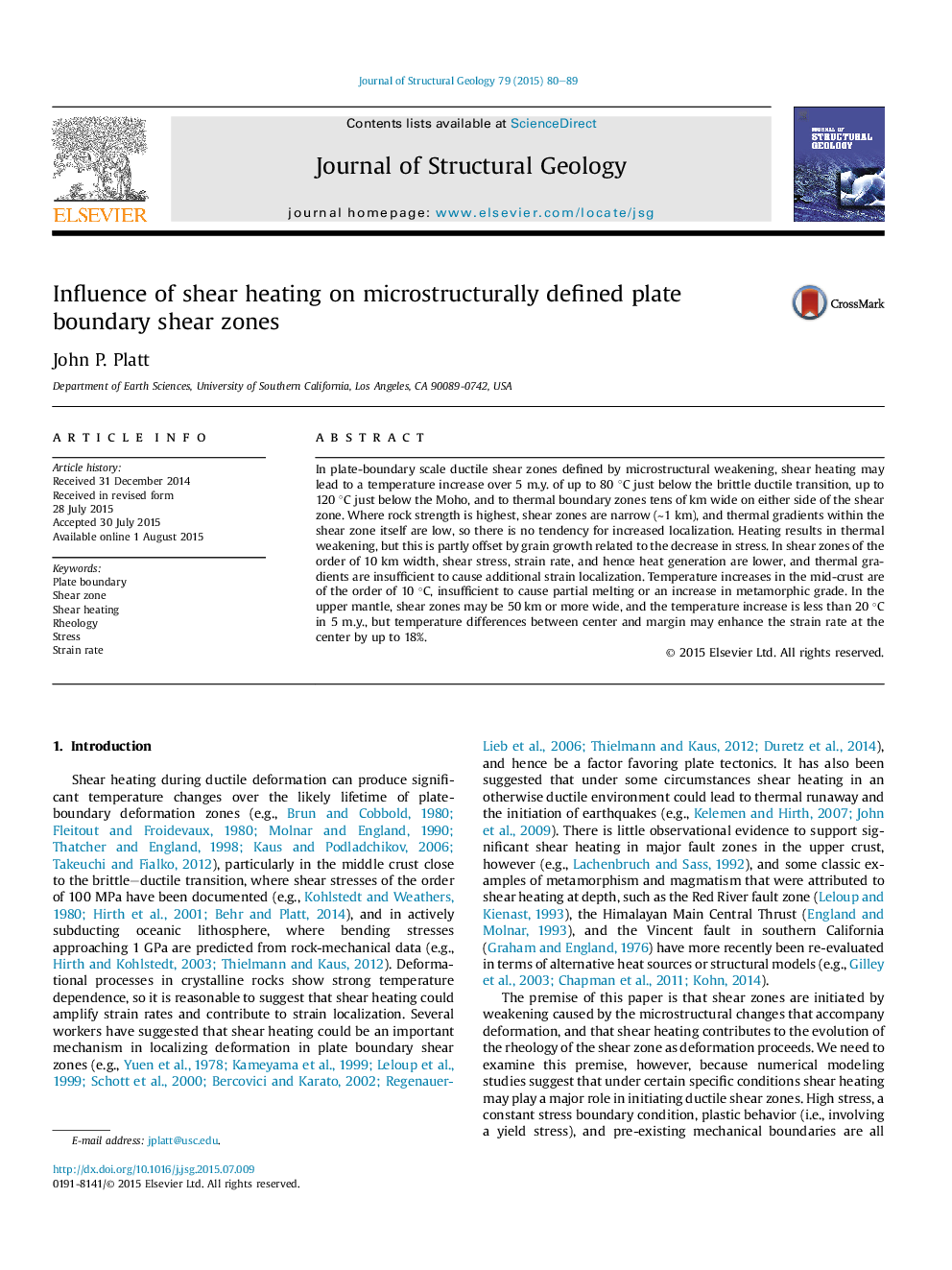| کد مقاله | کد نشریه | سال انتشار | مقاله انگلیسی | نسخه تمام متن |
|---|---|---|---|---|
| 4732989 | 1640501 | 2015 | 10 صفحه PDF | دانلود رایگان |
• Heating in shear zones below the BDT and the Moho can increase T by up to 120 °C.
• After 5 m.y., temperature increases at less than 6°/m.y.
• Shear heating does not cause any significant increase in strain localization.
• Shear heating in the mid-crust is insufficient to cause melting or a change in grade.
In plate-boundary scale ductile shear zones defined by microstructural weakening, shear heating may lead to a temperature increase over 5 m.y. of up to 80 °C just below the brittle ductile transition, up to 120 °C just below the Moho, and to thermal boundary zones tens of km wide on either side of the shear zone. Where rock strength is highest, shear zones are narrow (∼1 km), and thermal gradients within the shear zone itself are low, so there is no tendency for increased localization. Heating results in thermal weakening, but this is partly offset by grain growth related to the decrease in stress. In shear zones of the order of 10 km width, shear stress, strain rate, and hence heat generation are lower, and thermal gradients are insufficient to cause additional strain localization. Temperature increases in the mid-crust are of the order of 10 °C, insufficient to cause partial melting or an increase in metamorphic grade. In the upper mantle, shear zones may be 50 km or more wide, and the temperature increase is less than 20 °C in 5 m.y., but temperature differences between center and margin may enhance the strain rate at the center by up to 18%.
Journal: Journal of Structural Geology - Volume 79, October 2015, Pages 80–89
